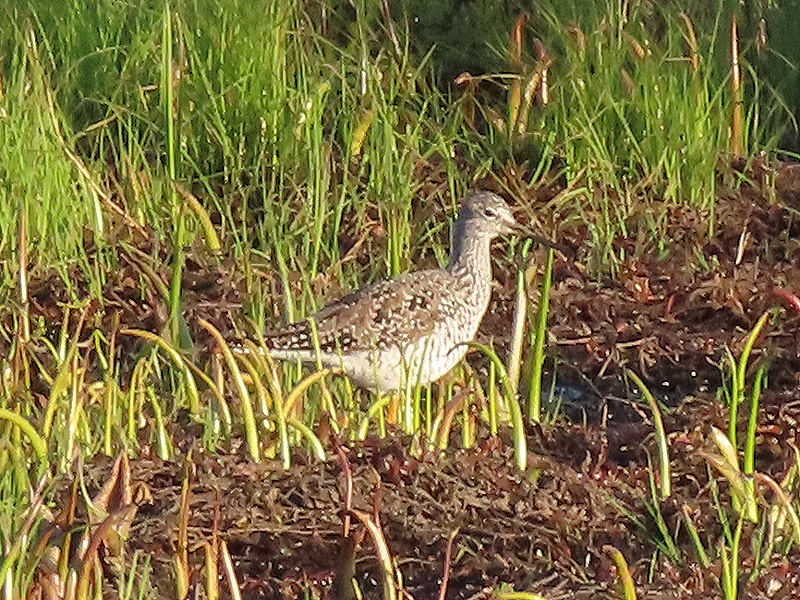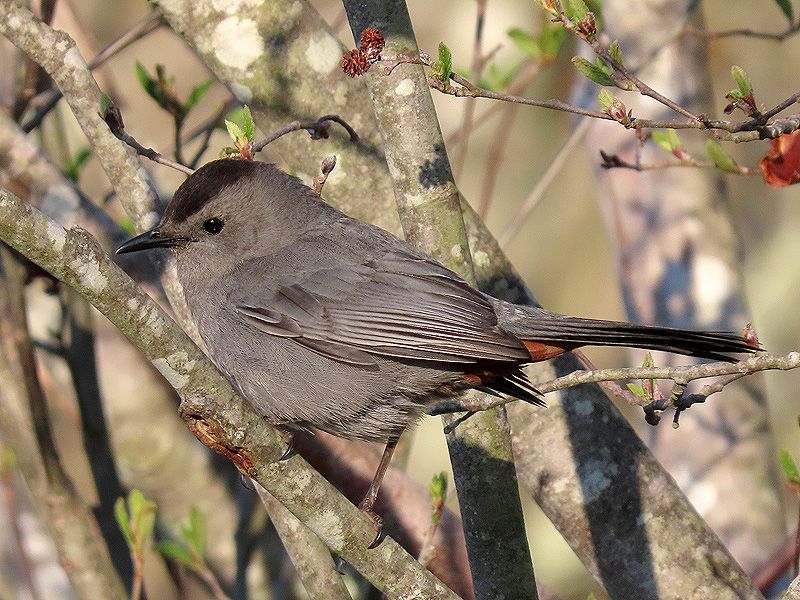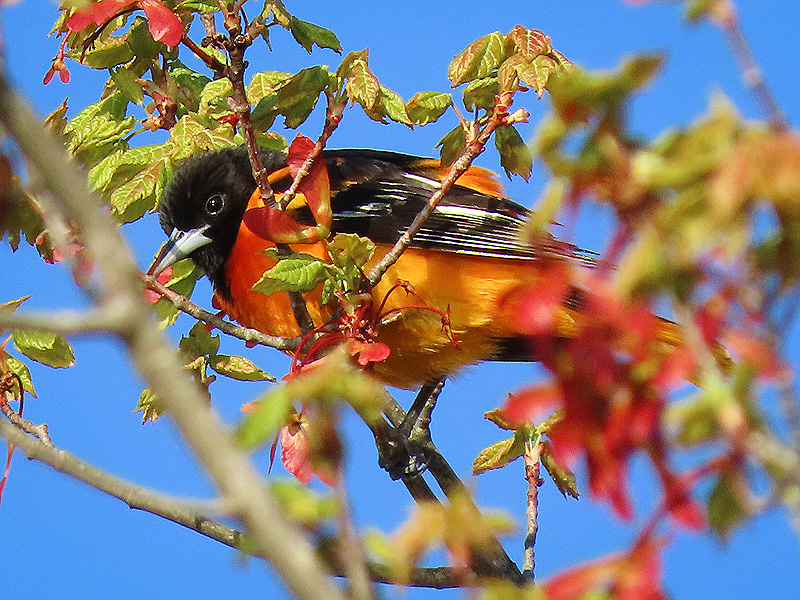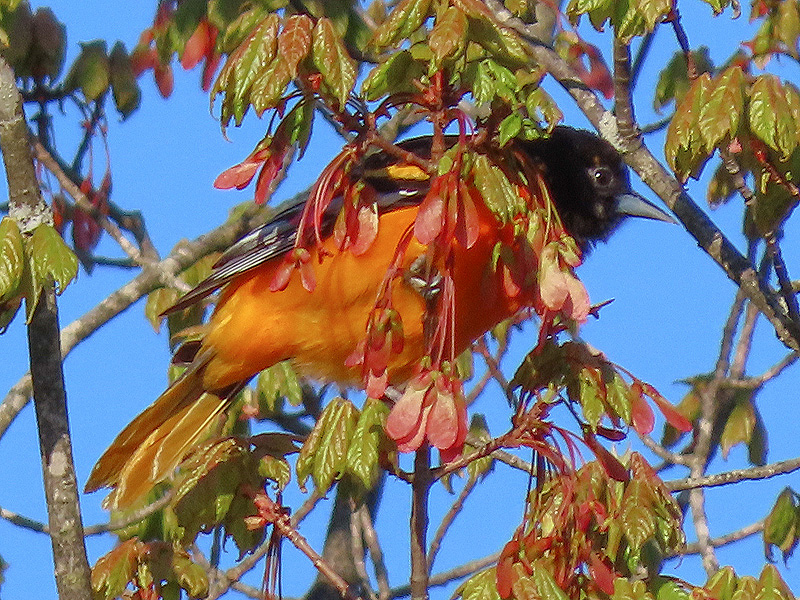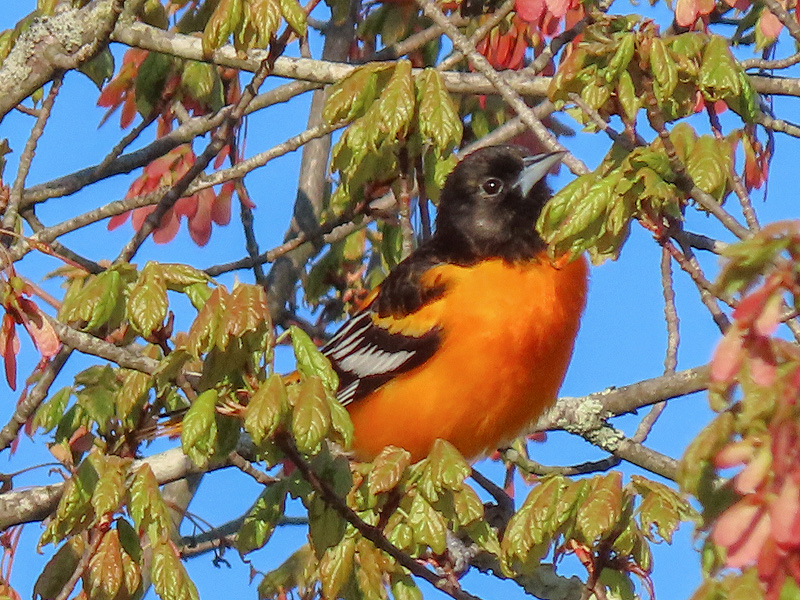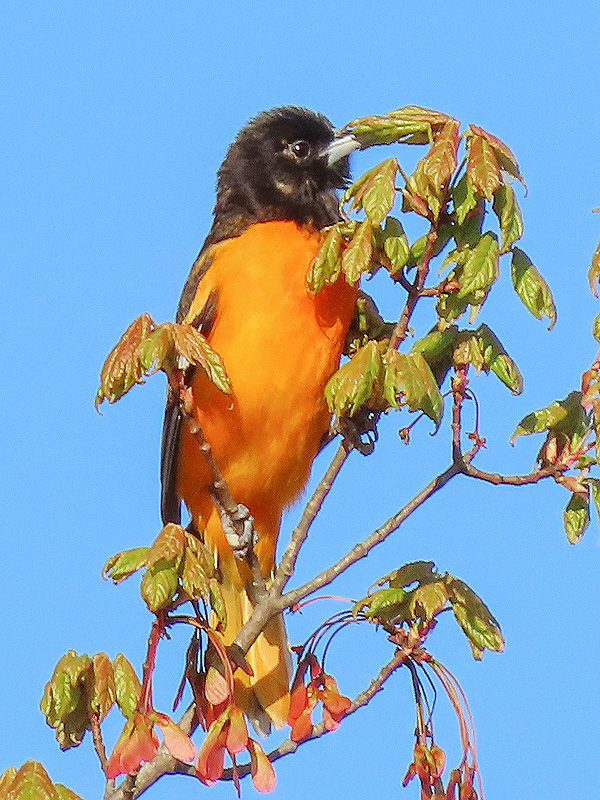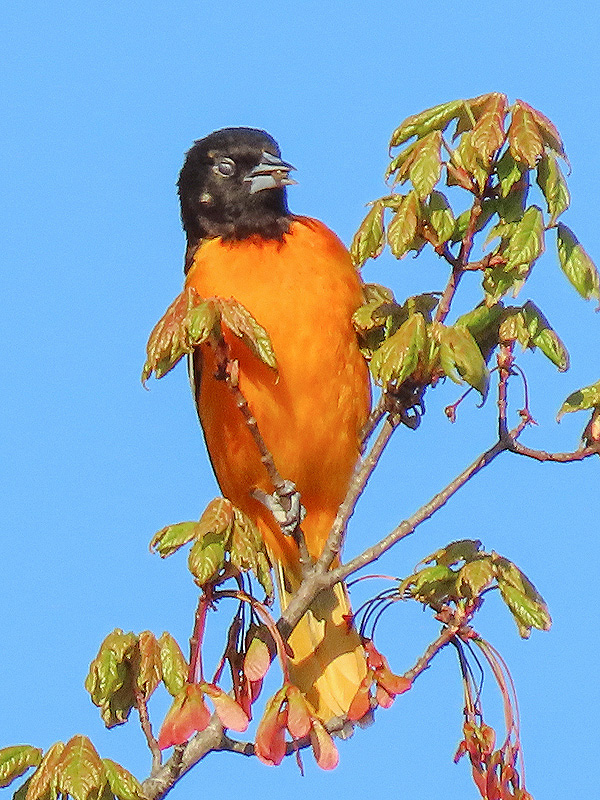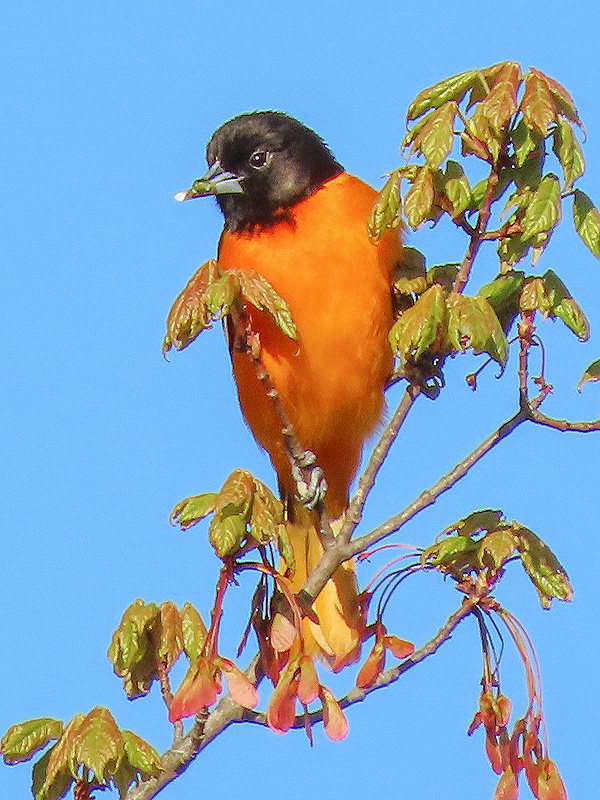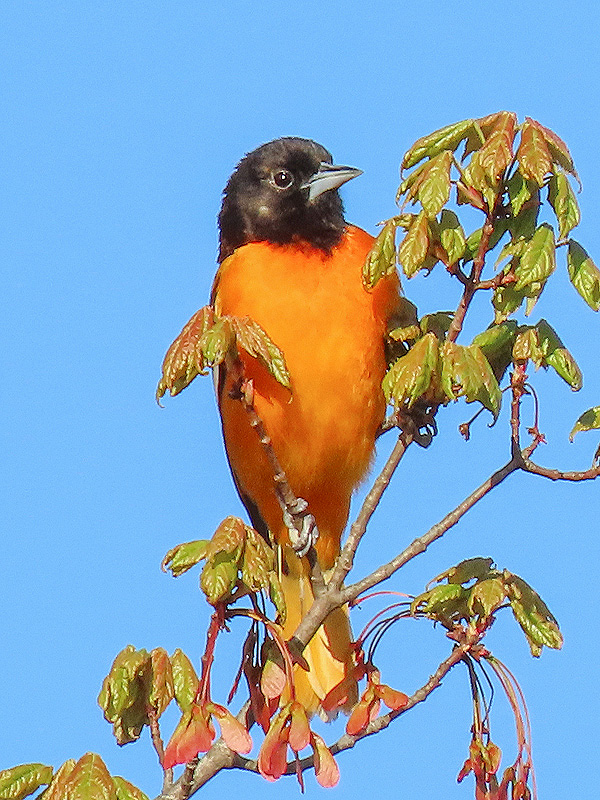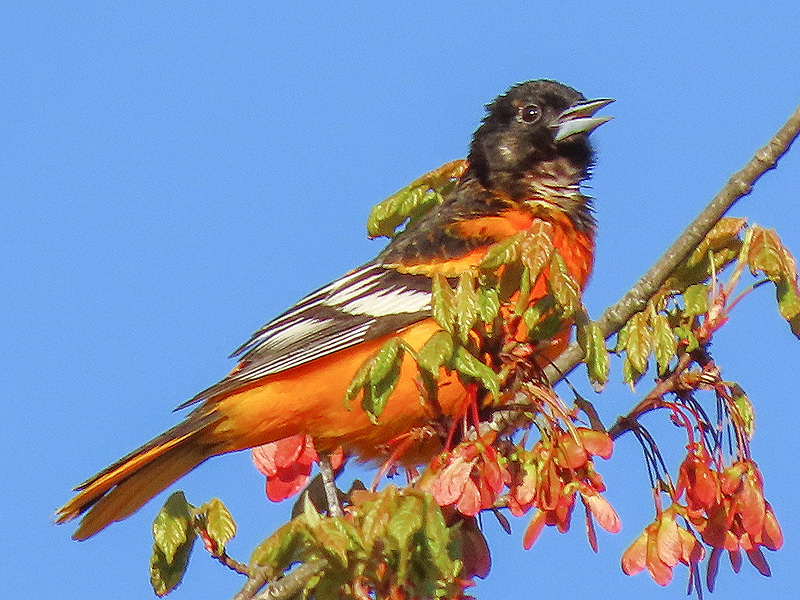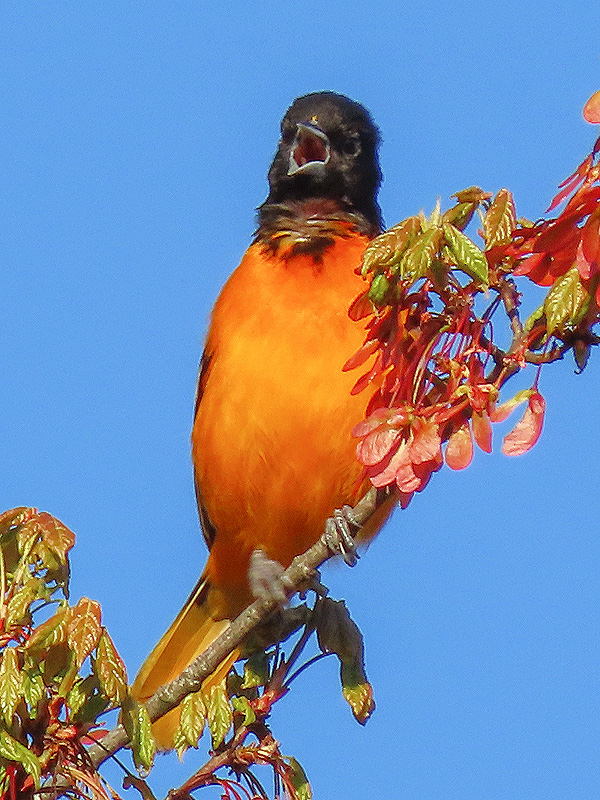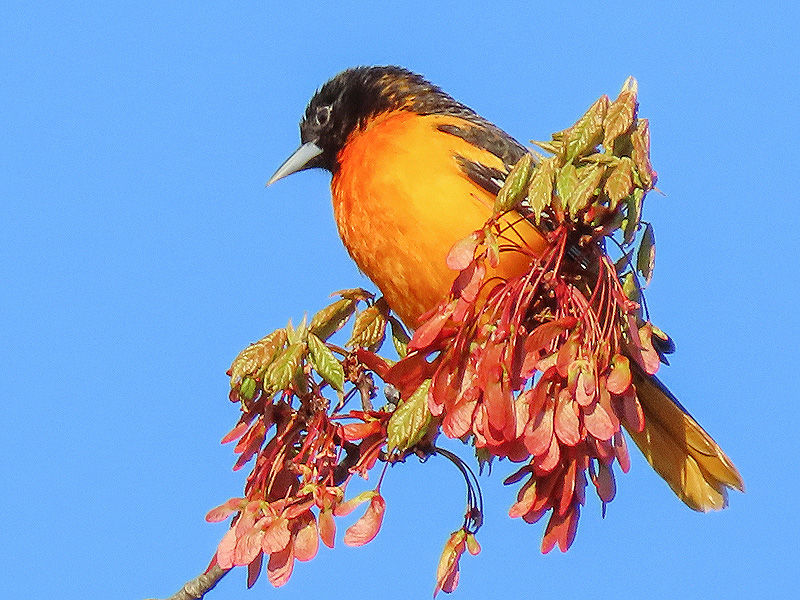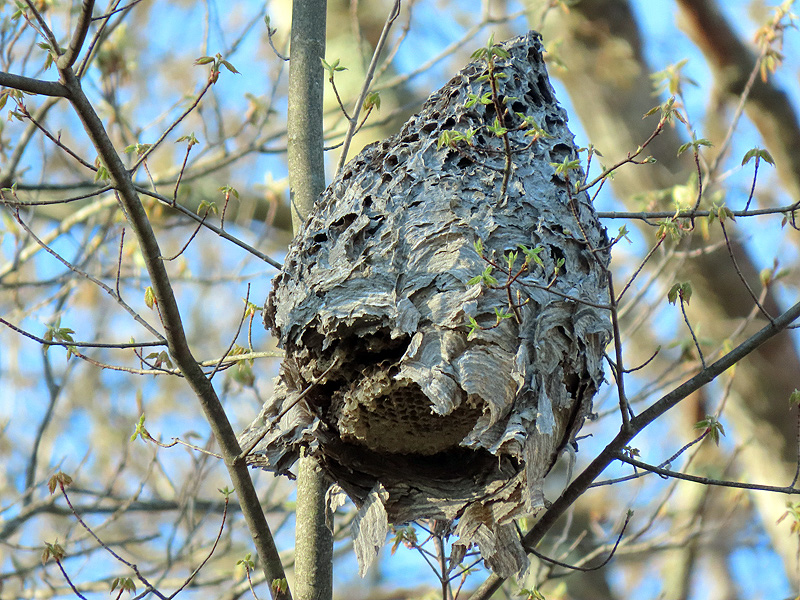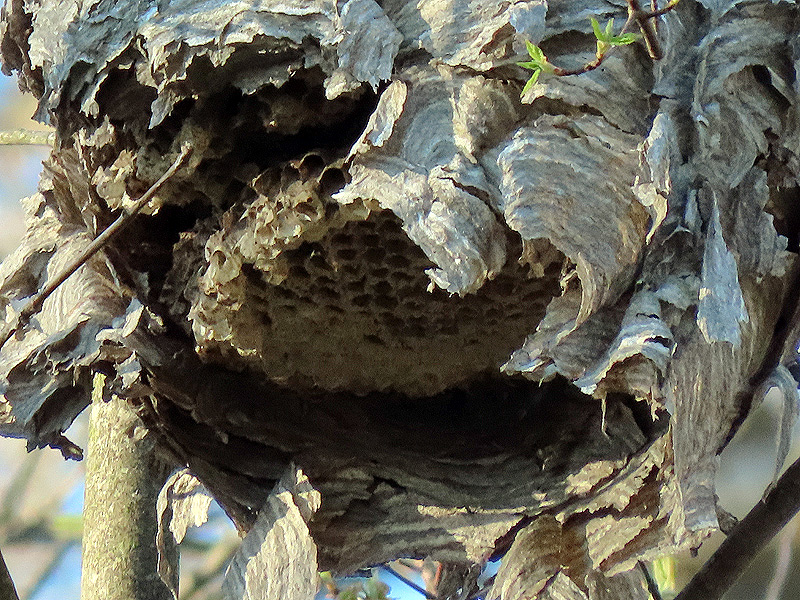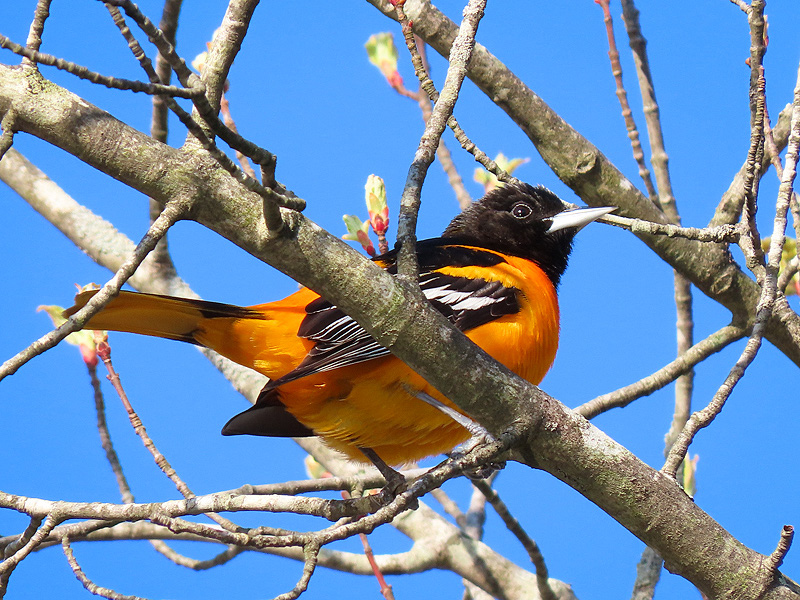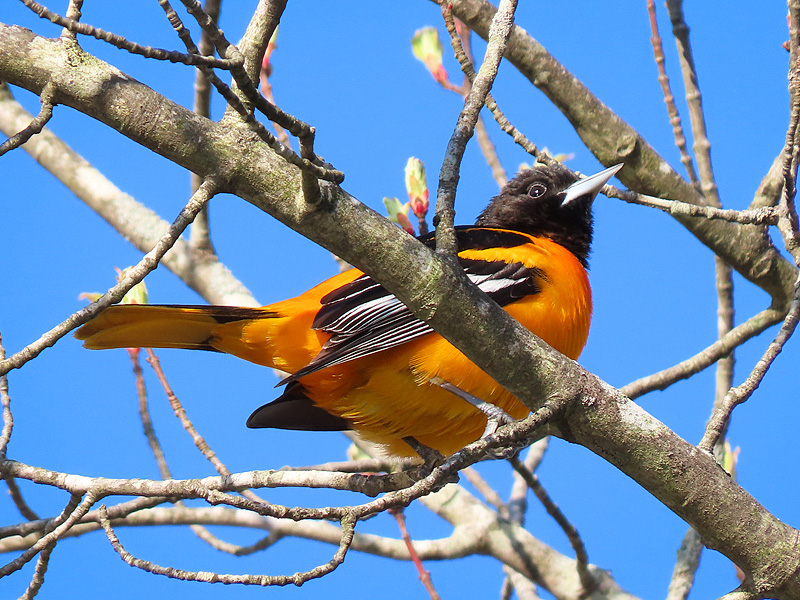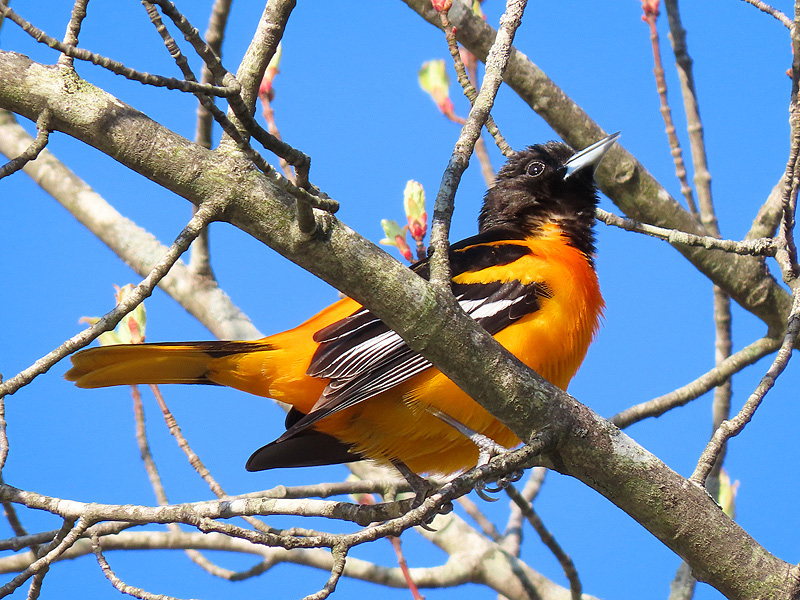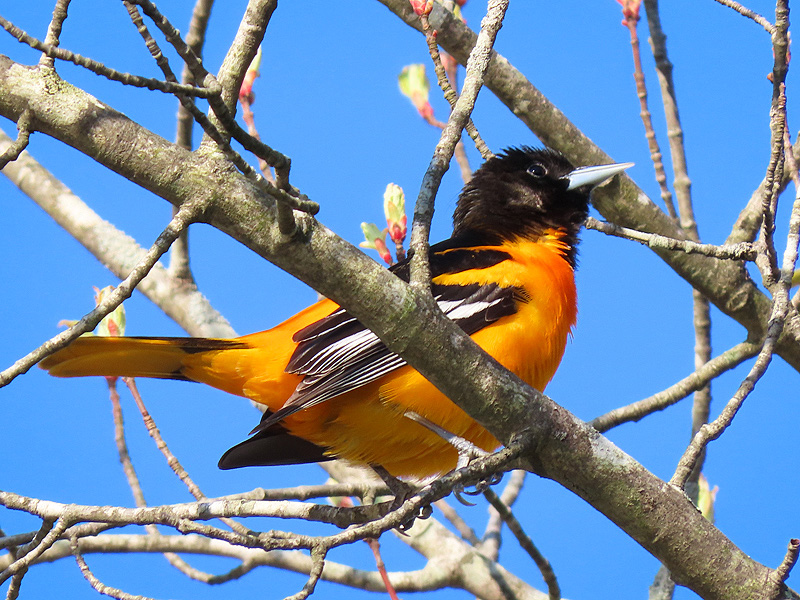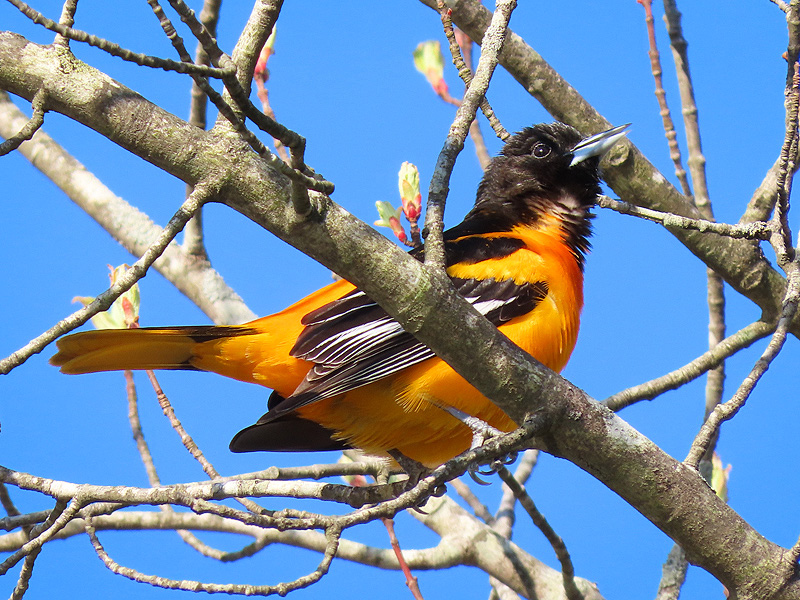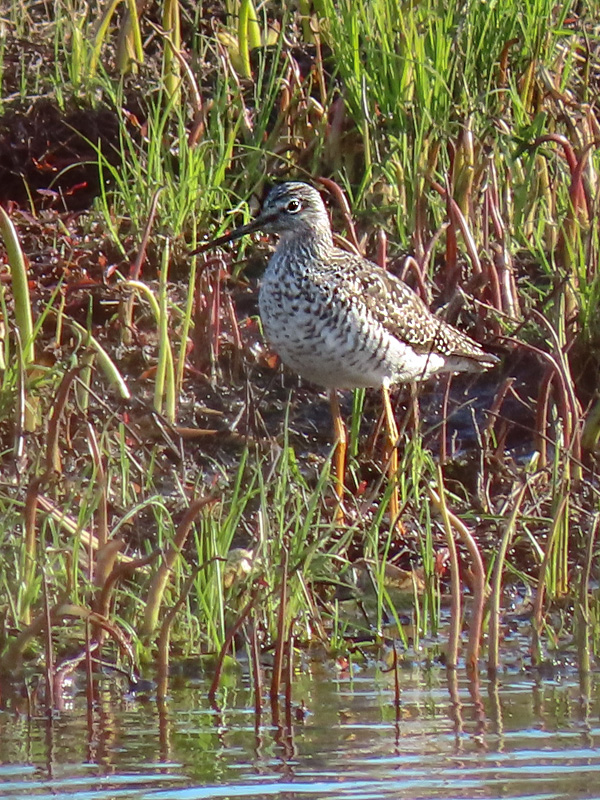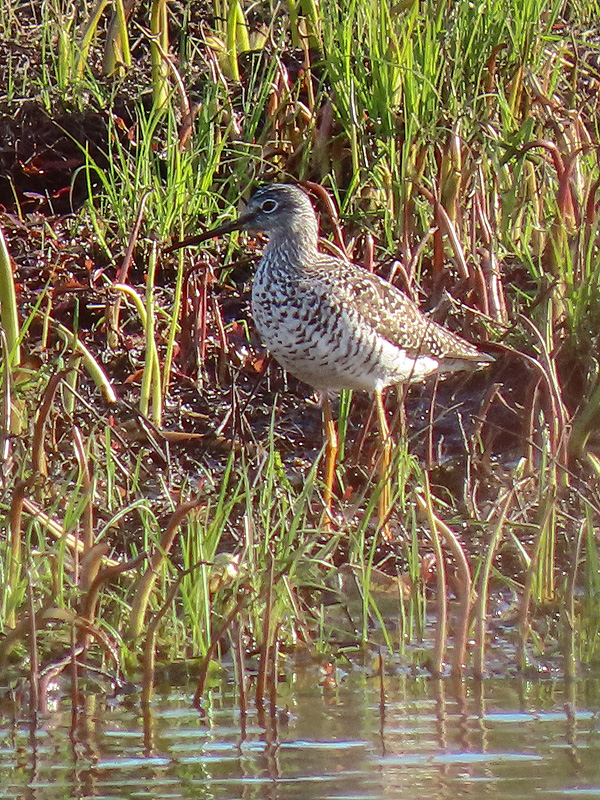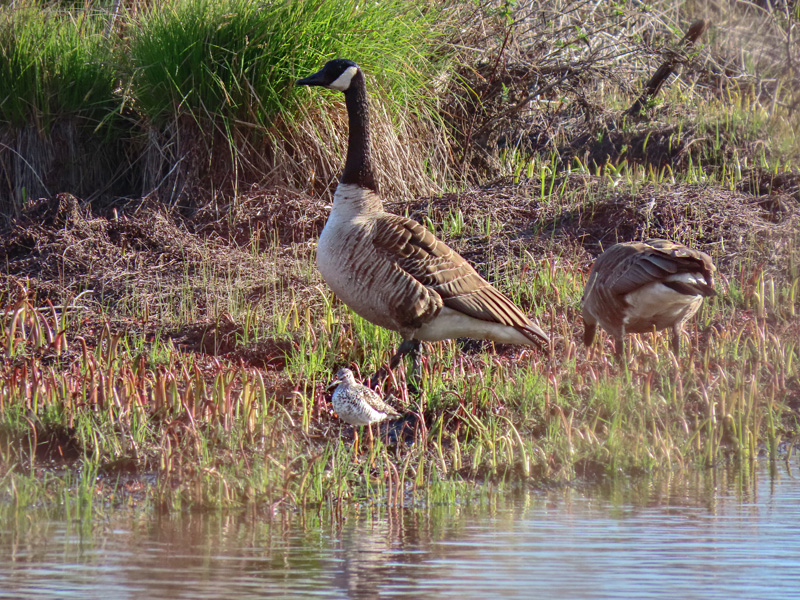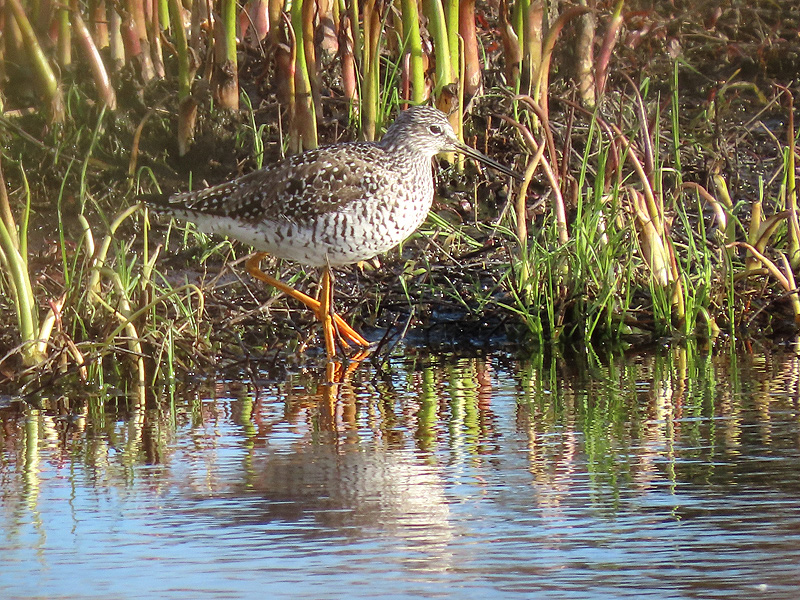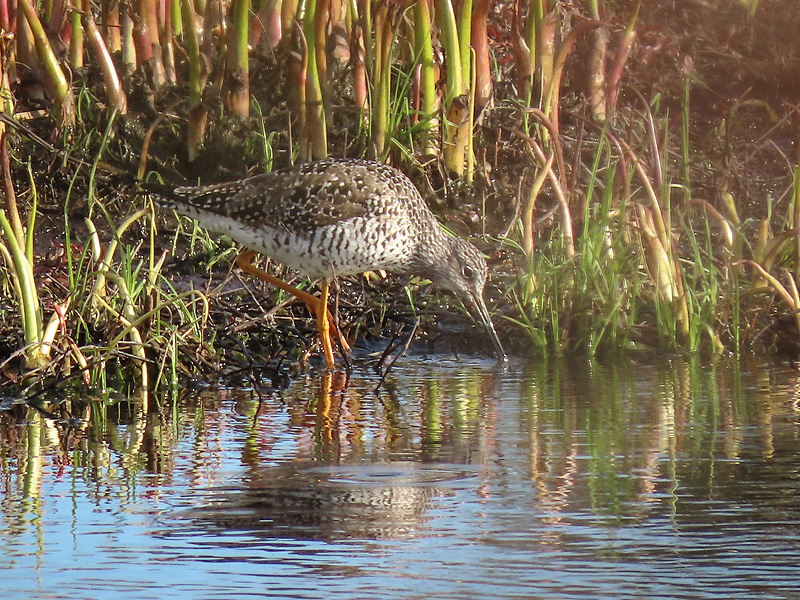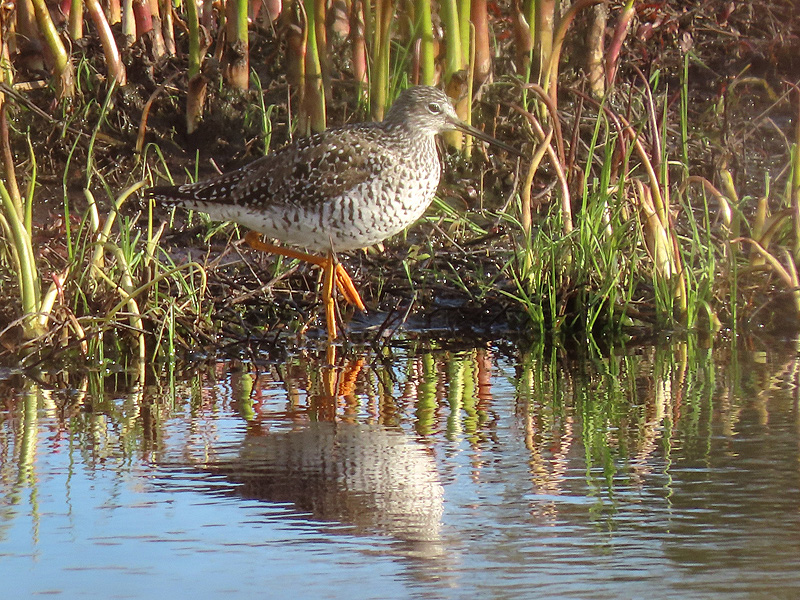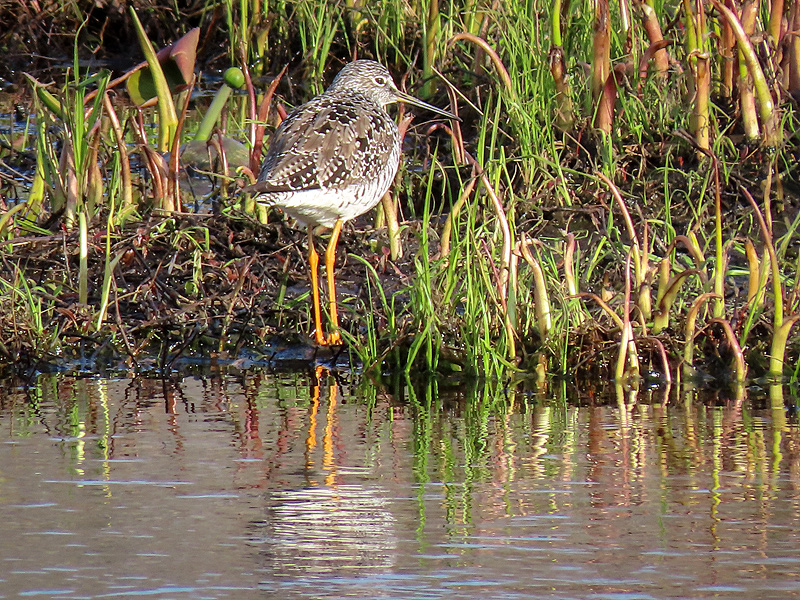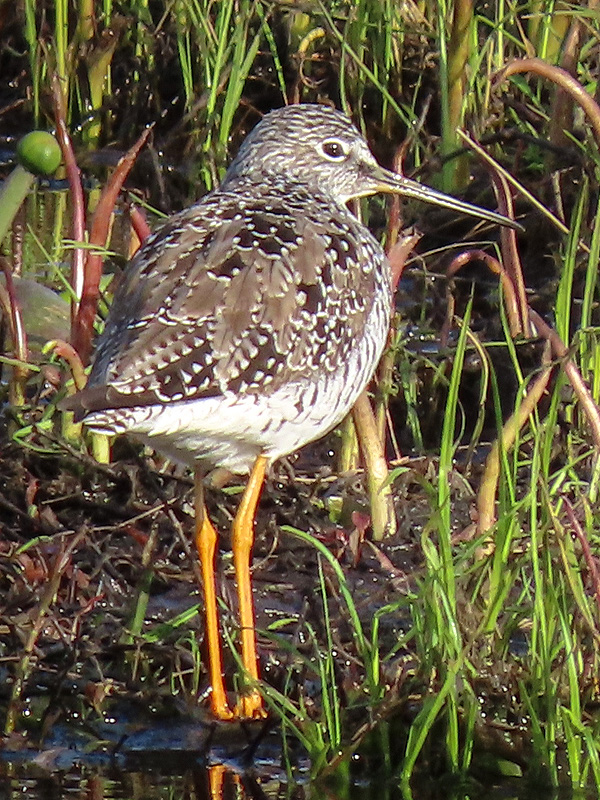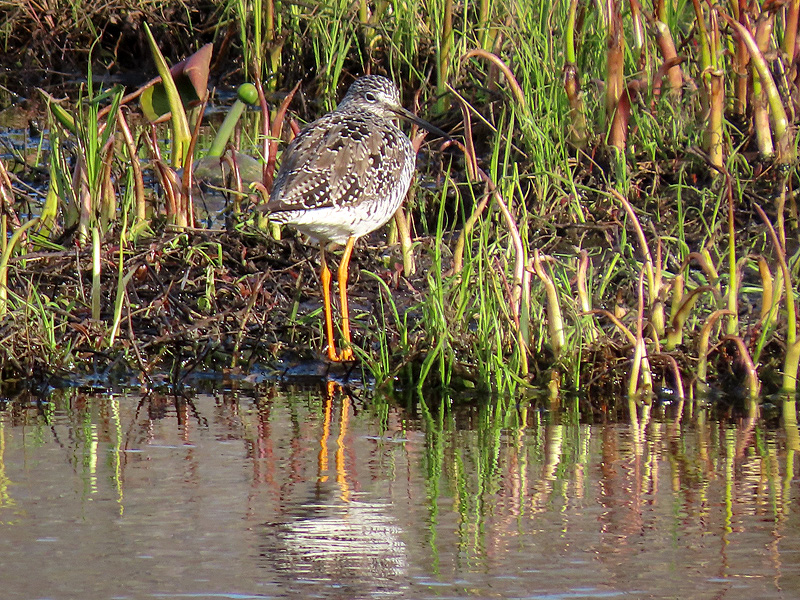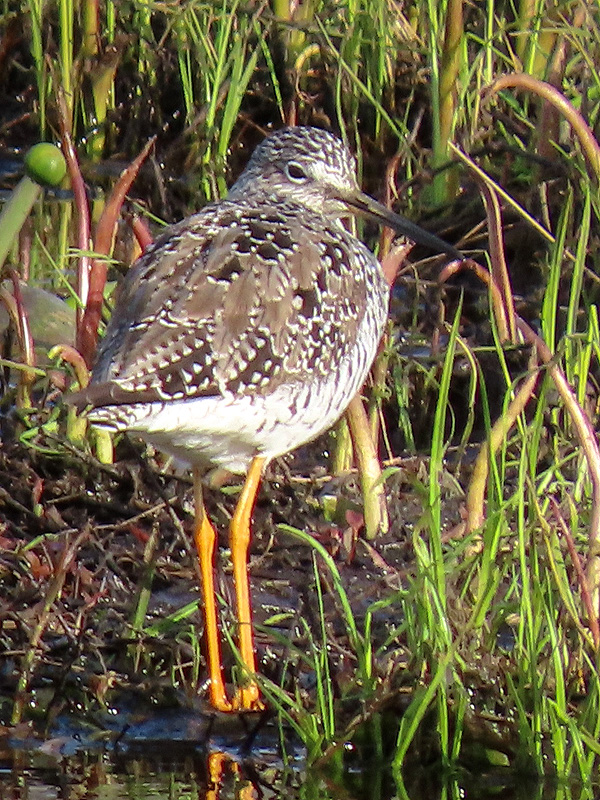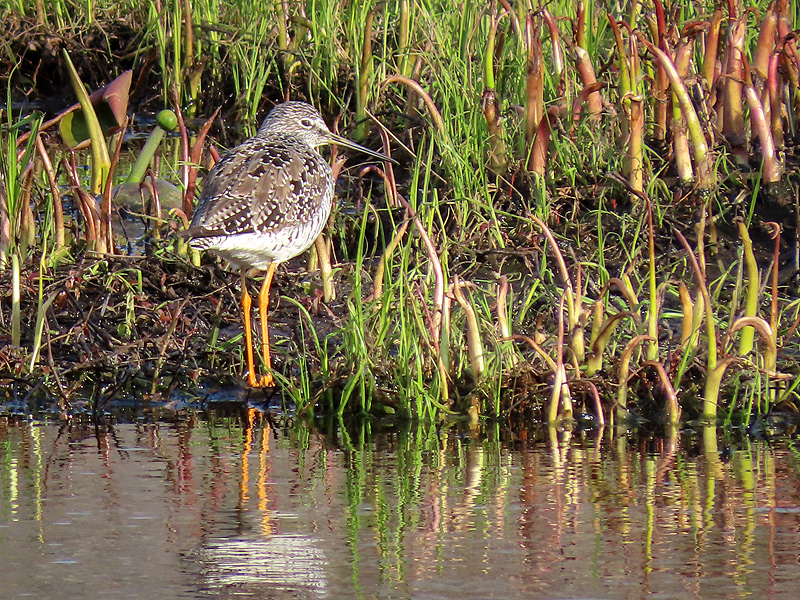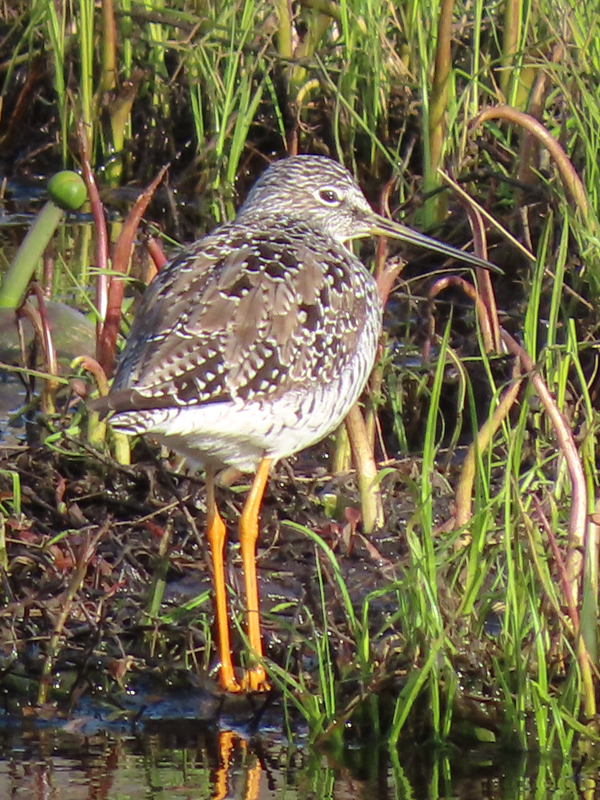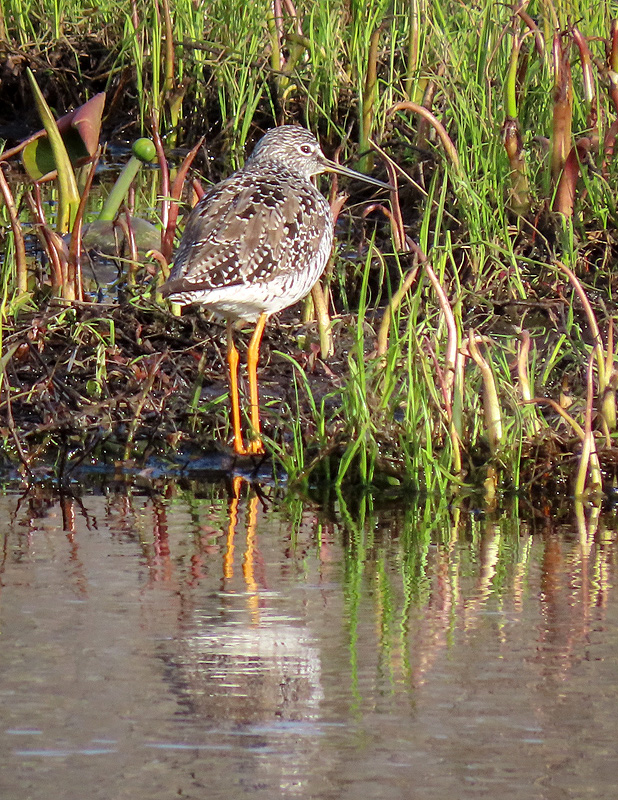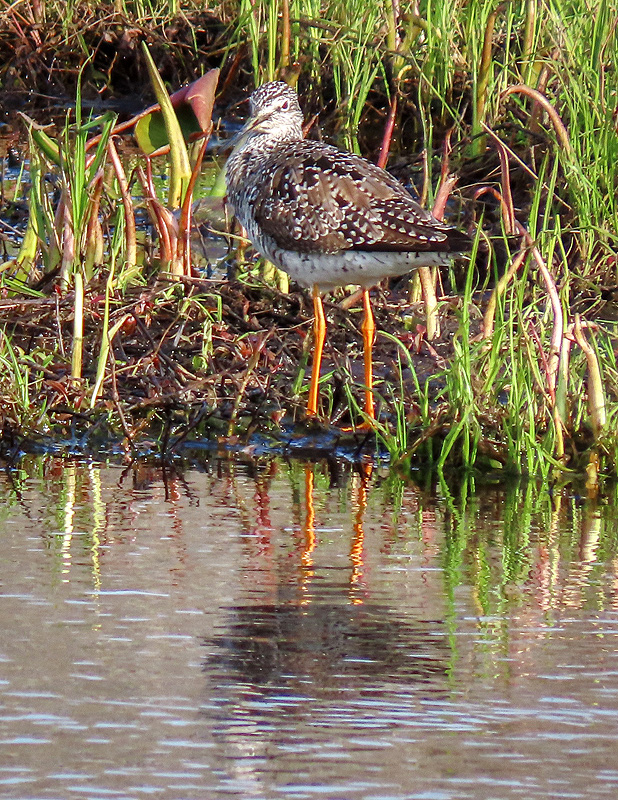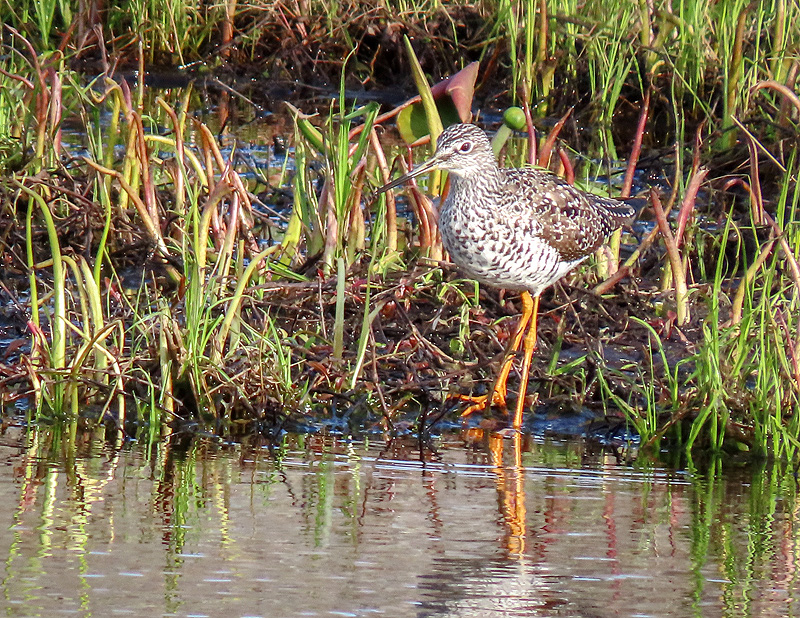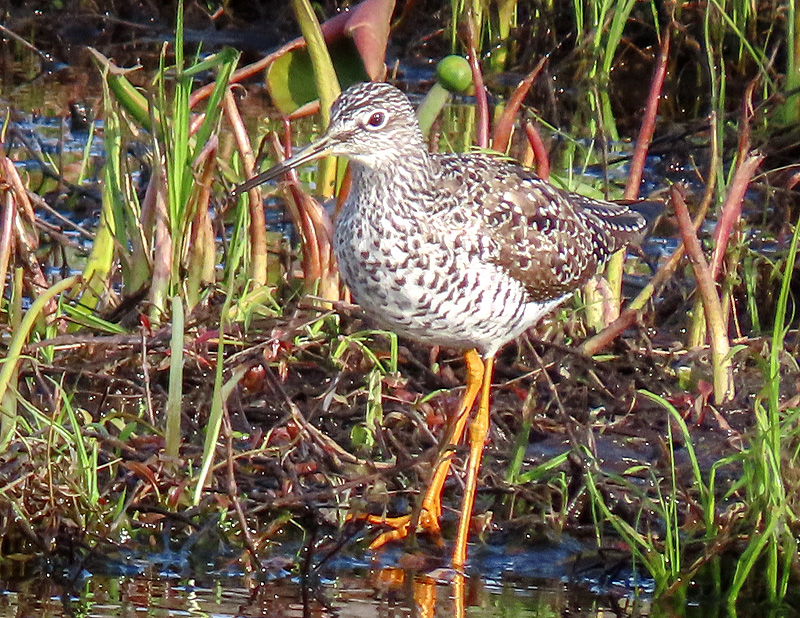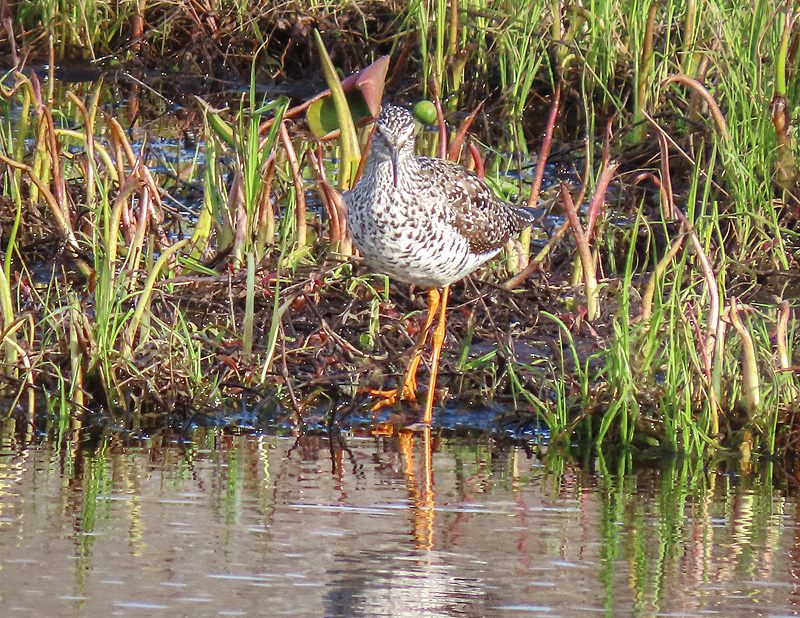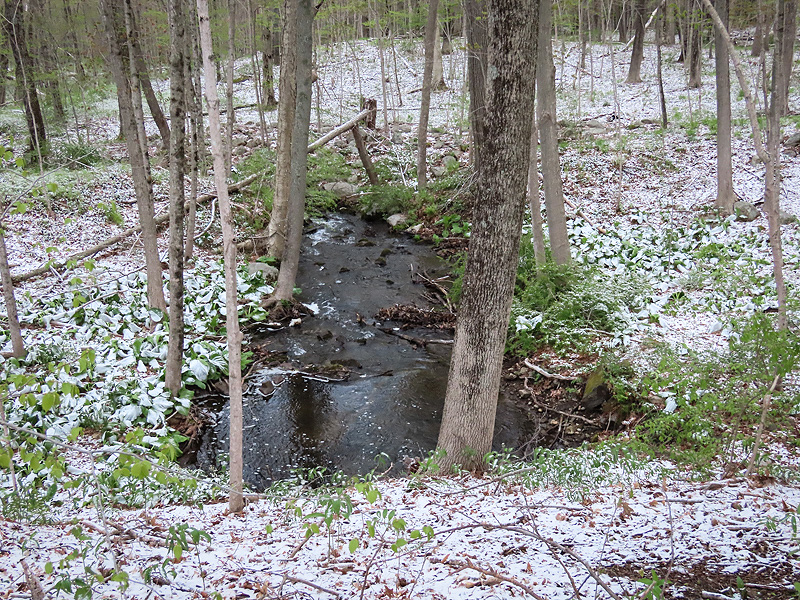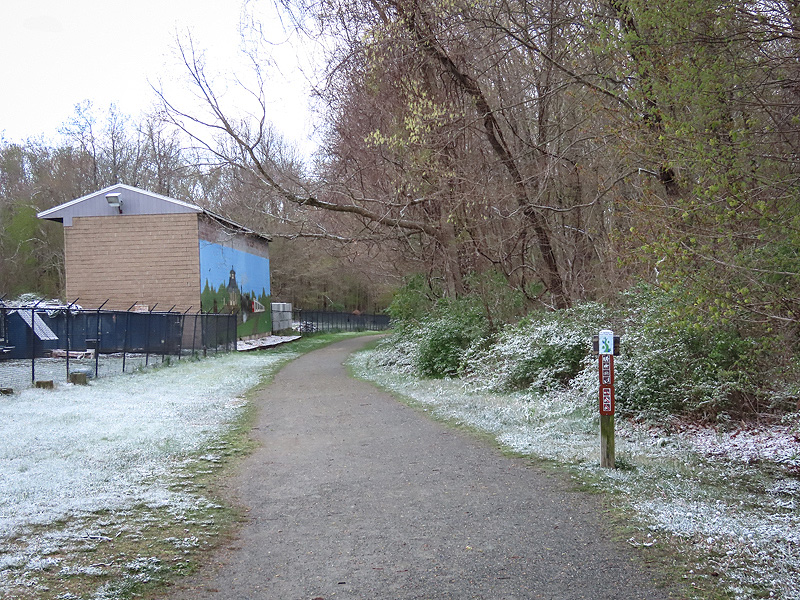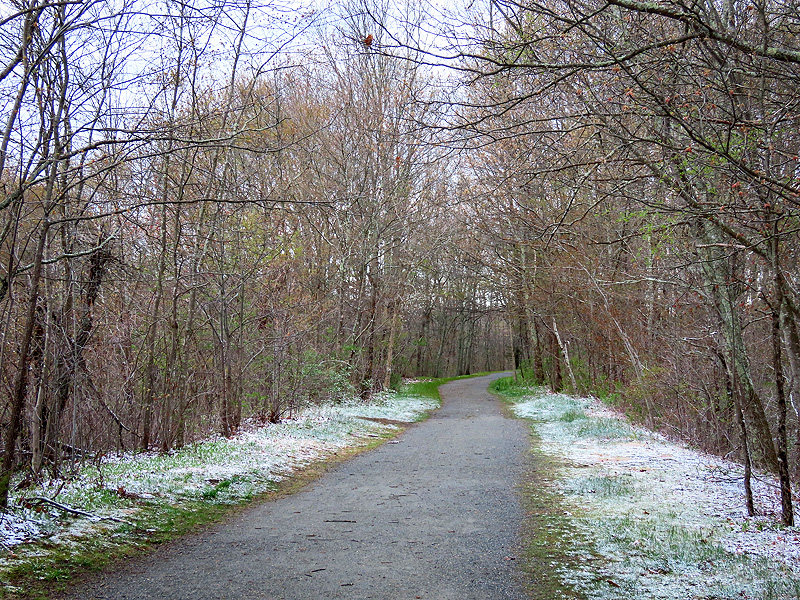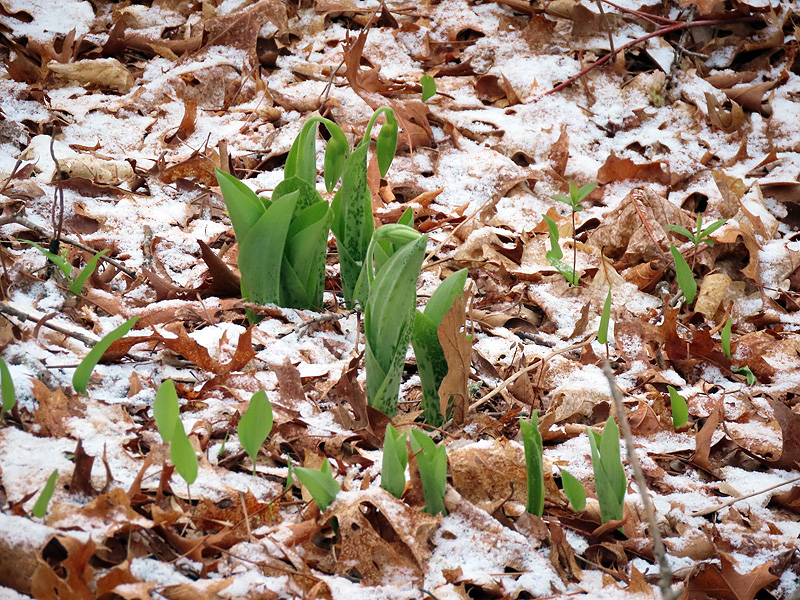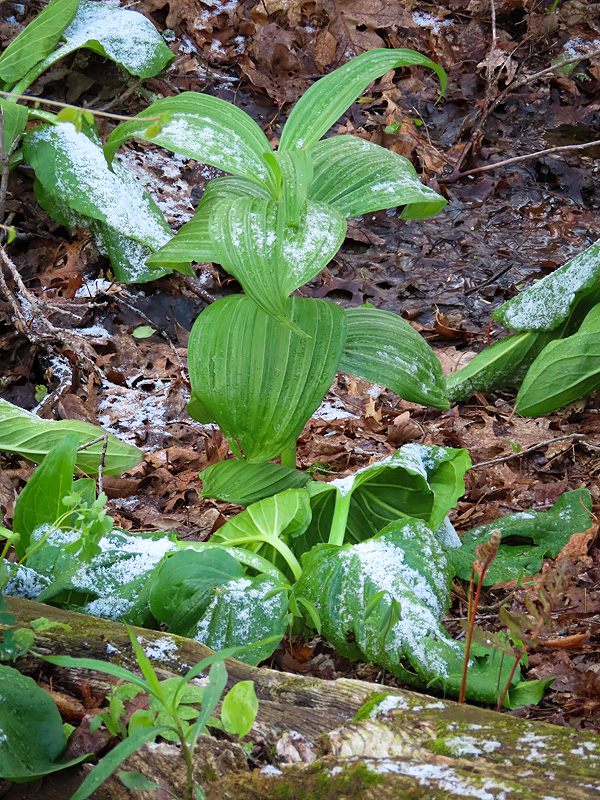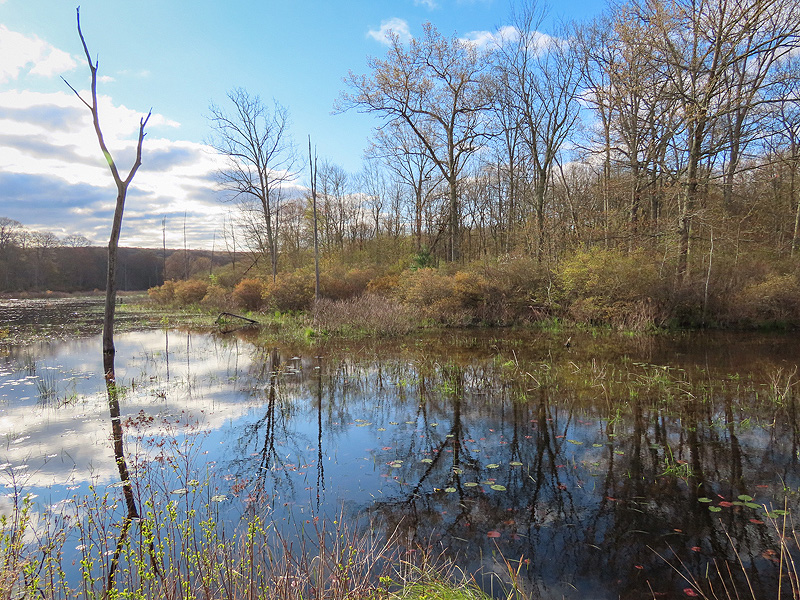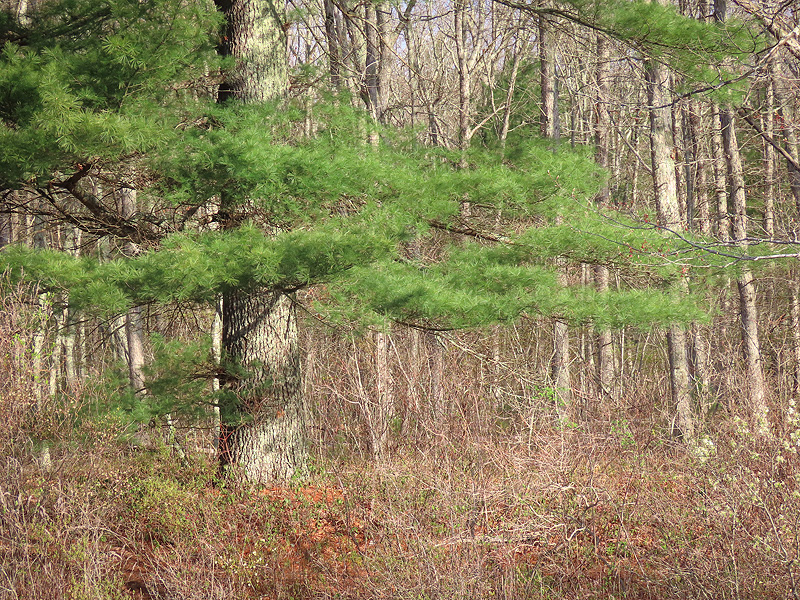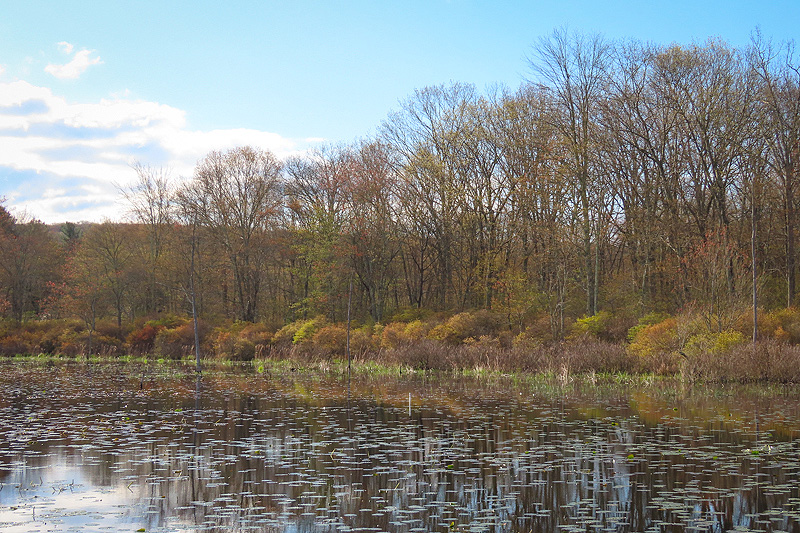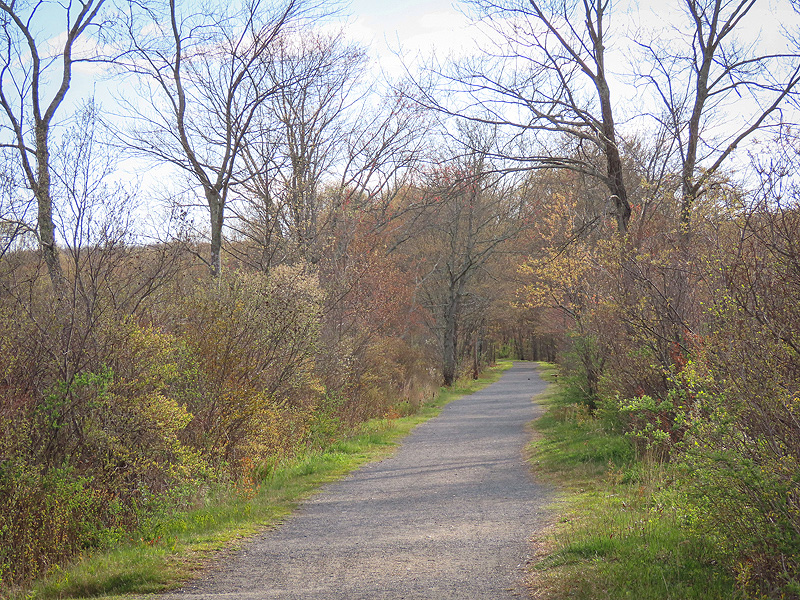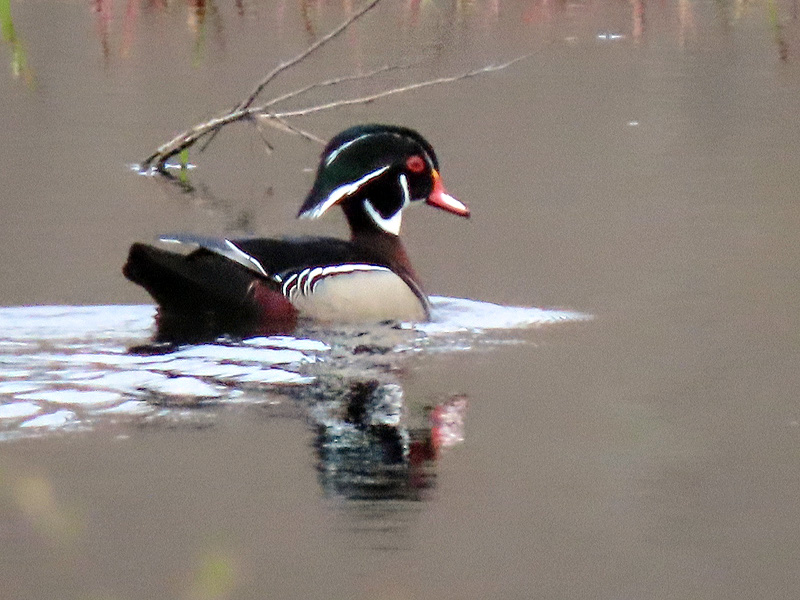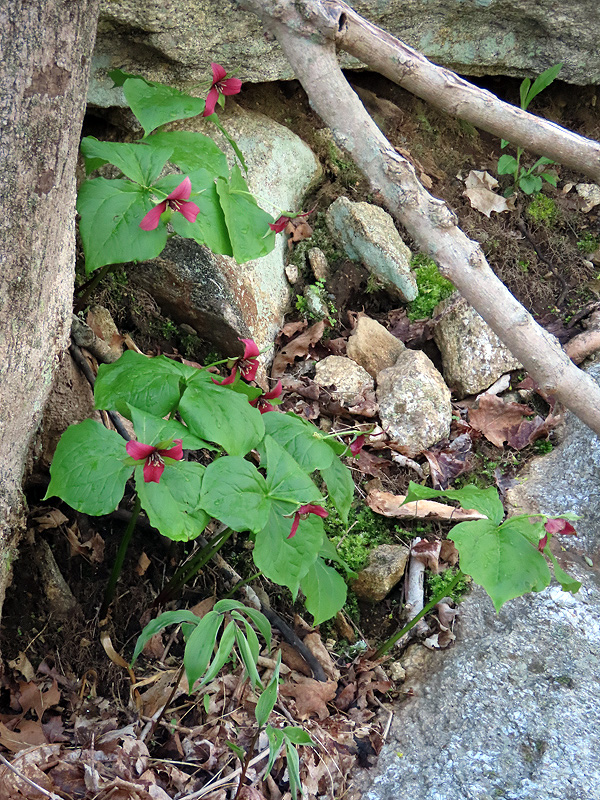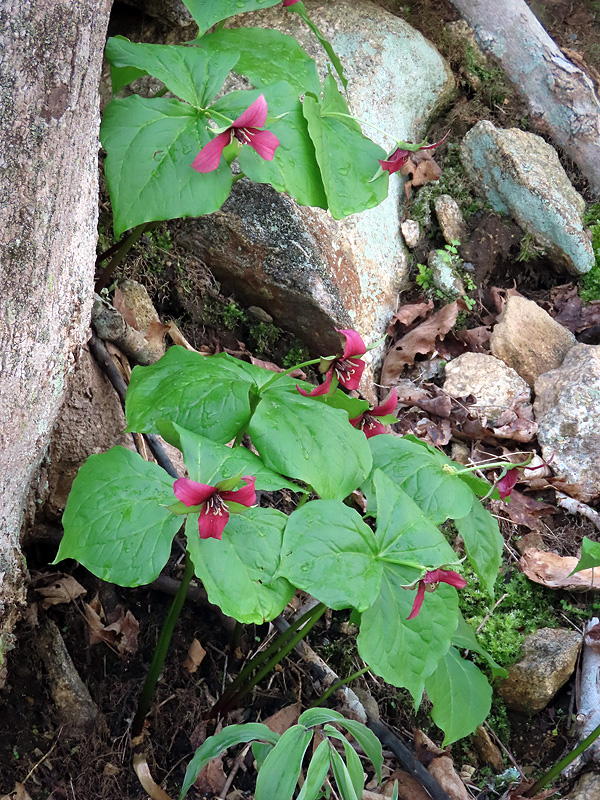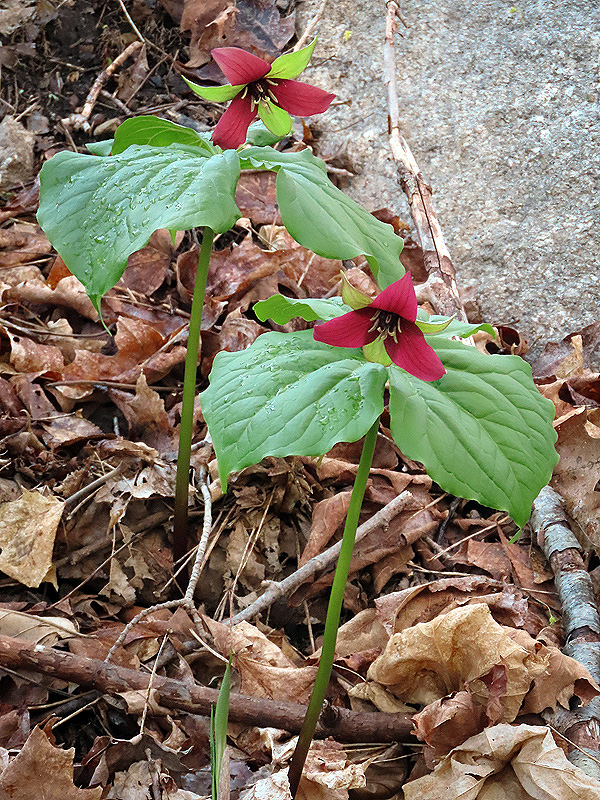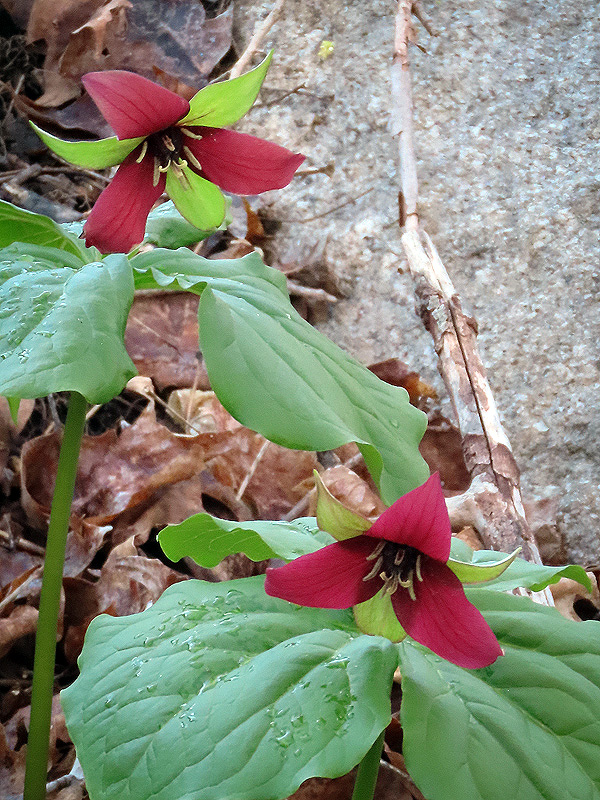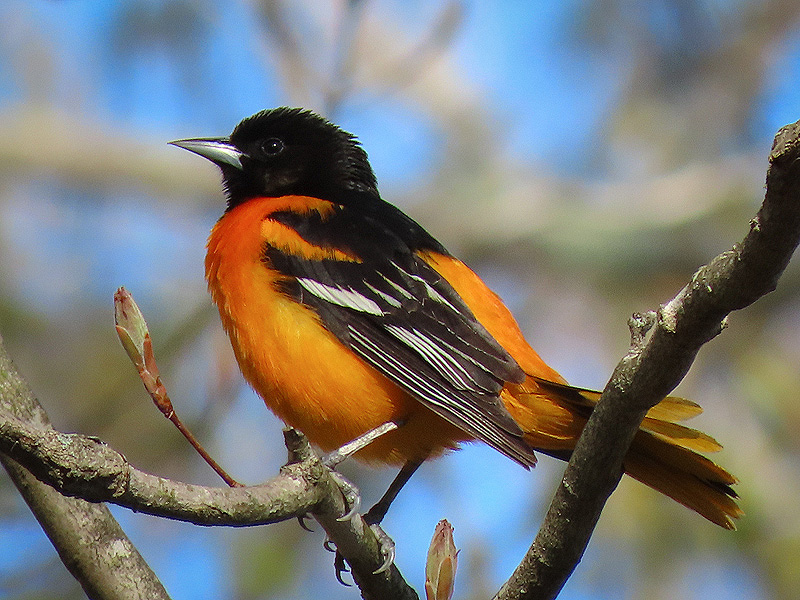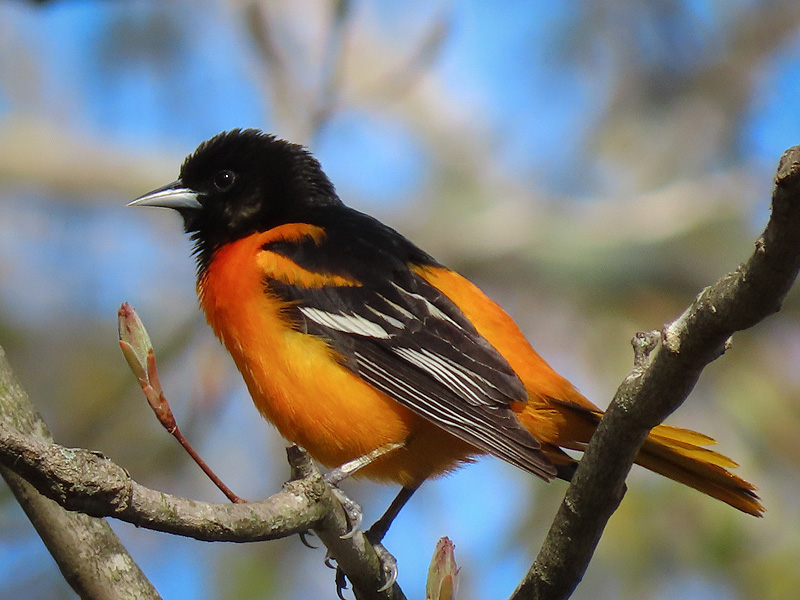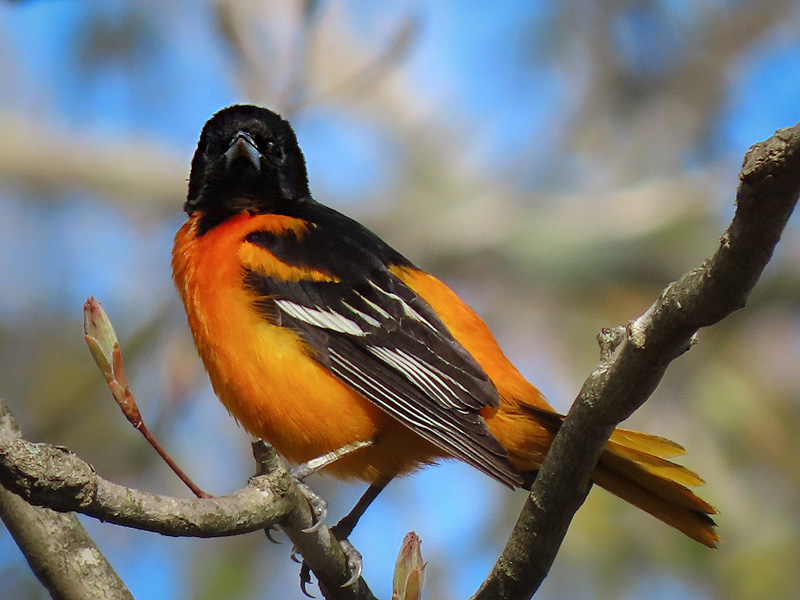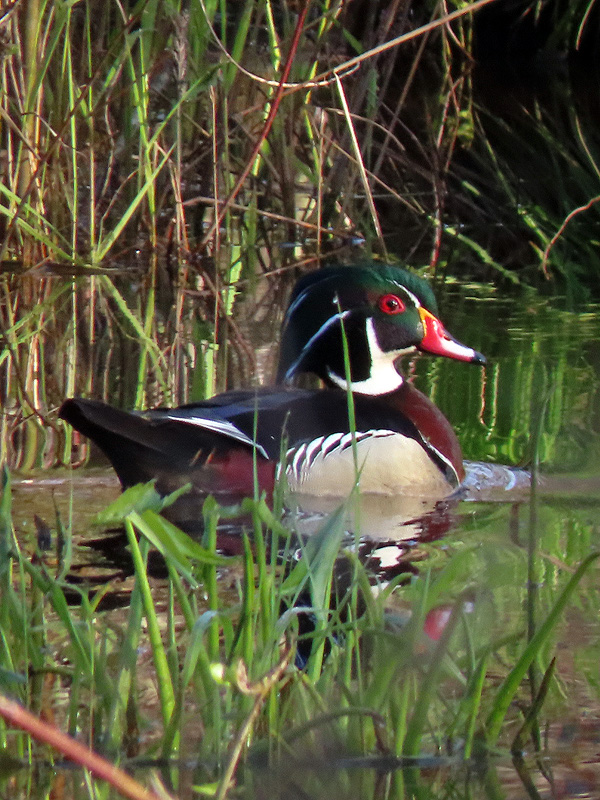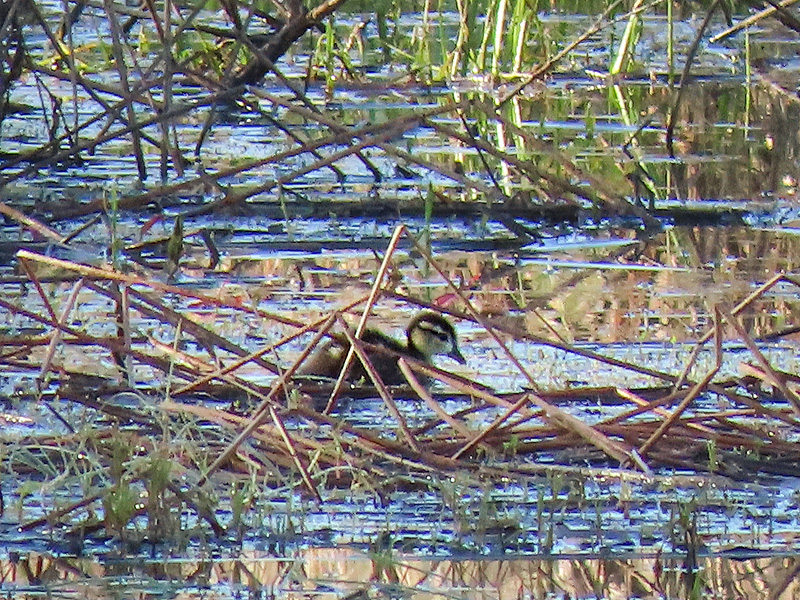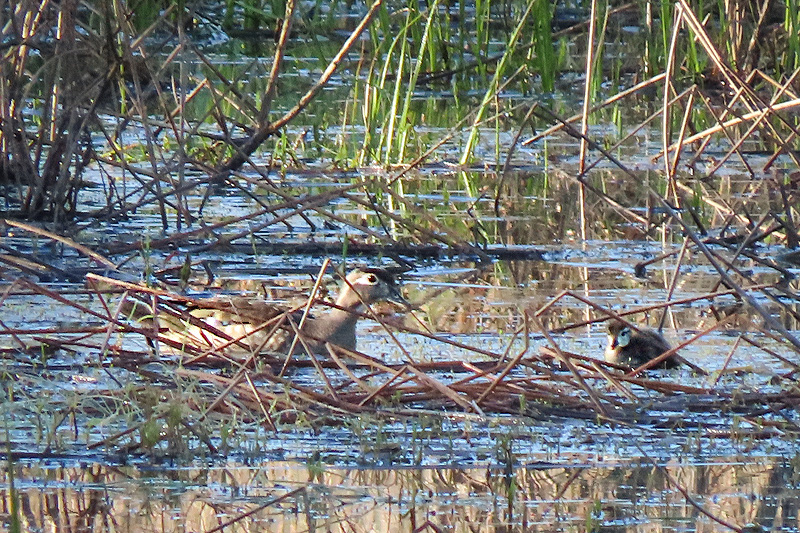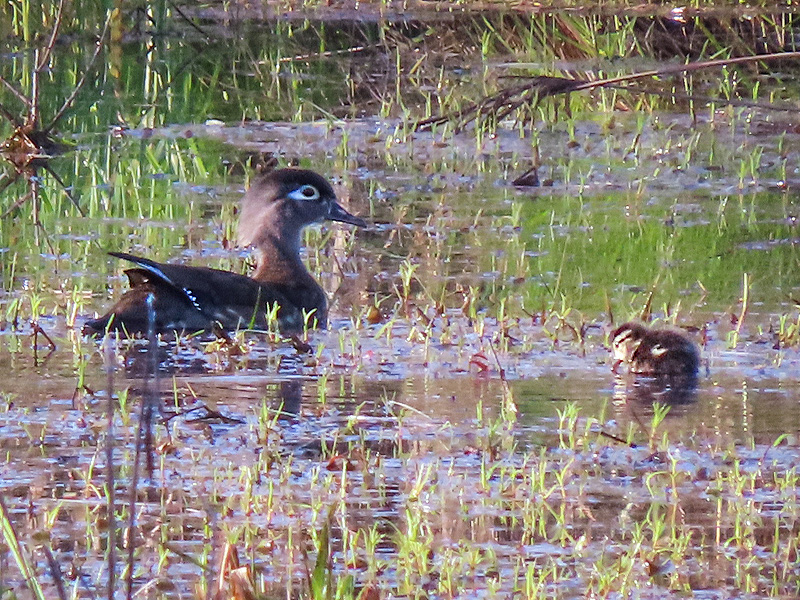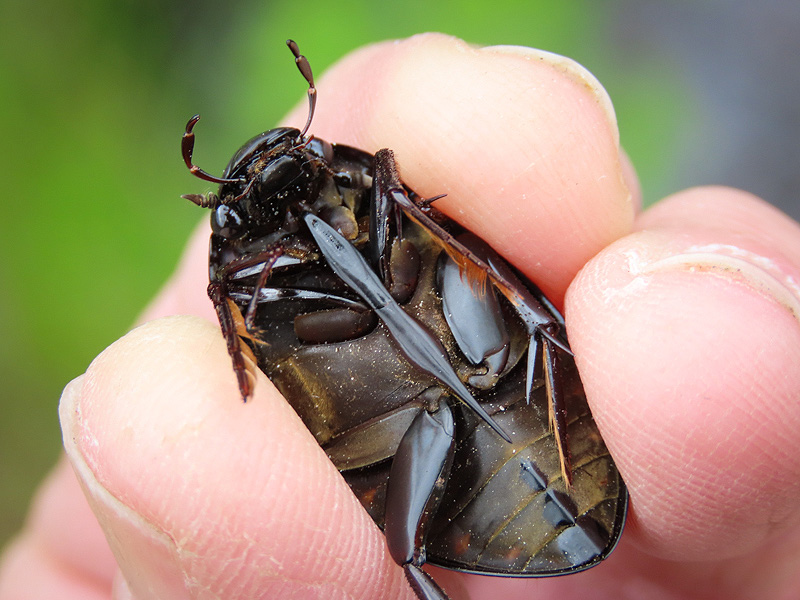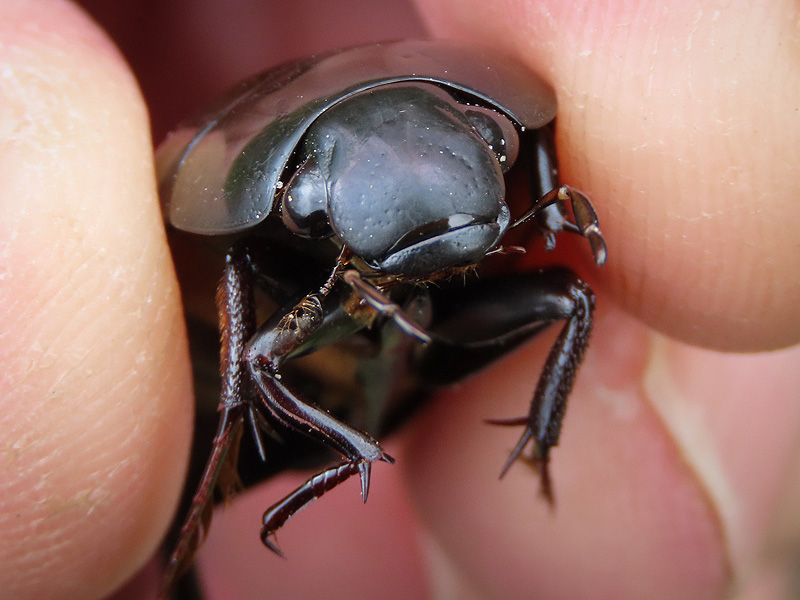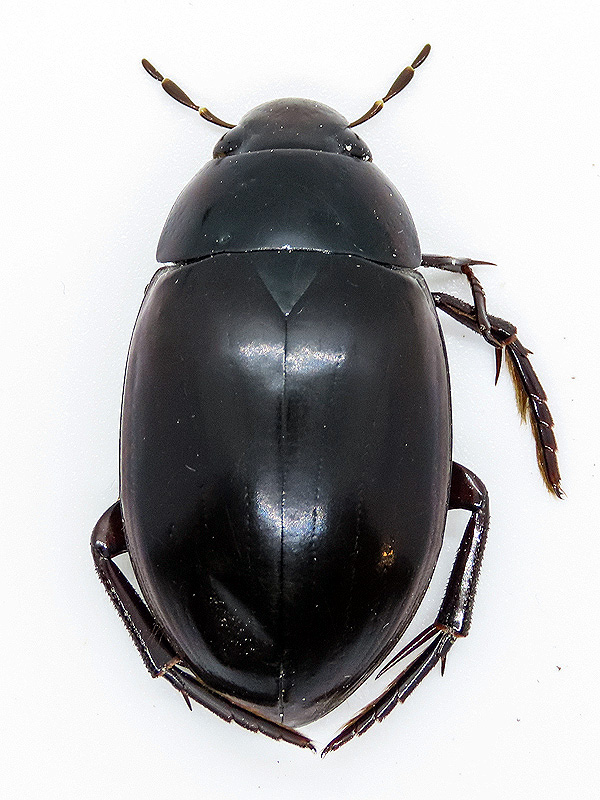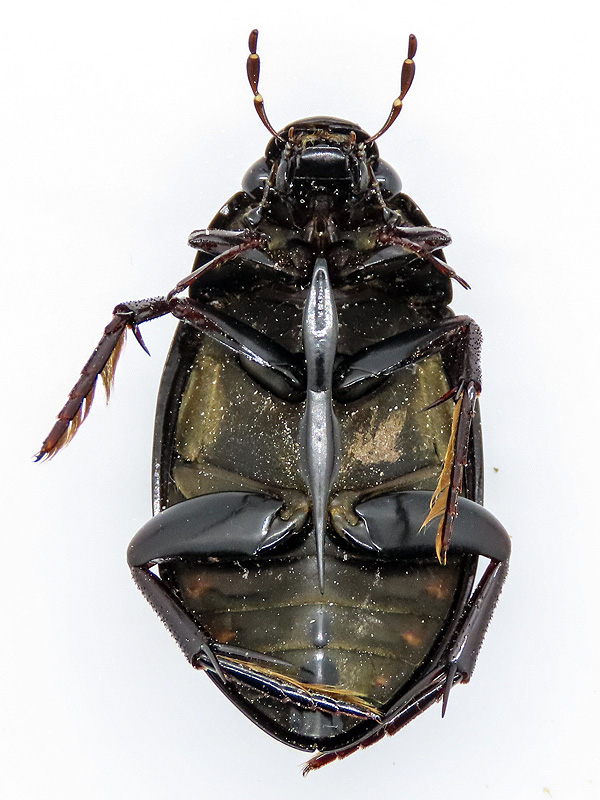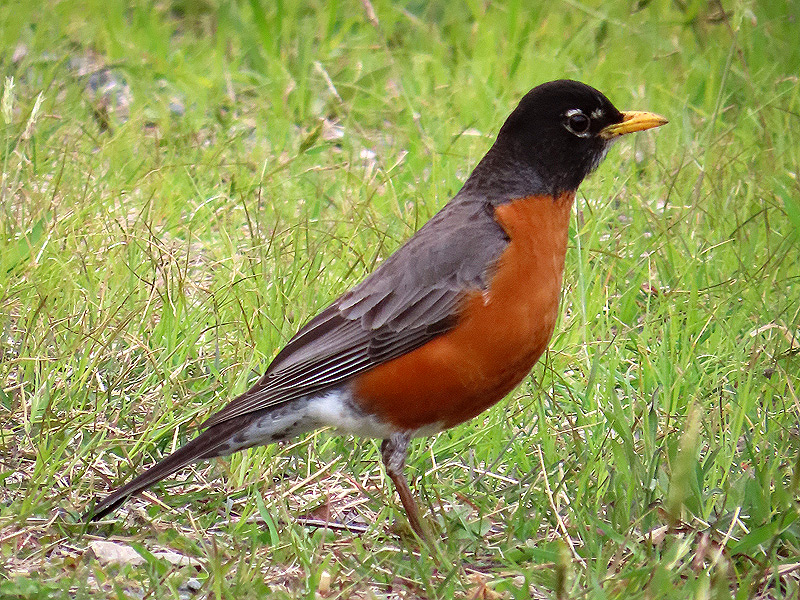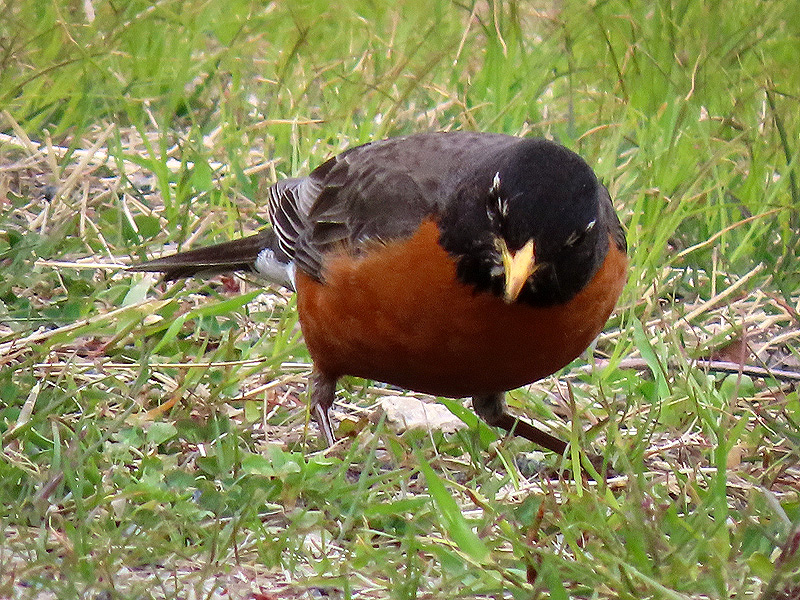Along the Air Line... 2020 - Spring, Part 14 The Air Line Trail in Eastern Connecticut - Stan Malcolm Photos |
HOME: Air Line... 2020 Pages Menu Stan's FlickR Albums |
May 8th. I'm almost certain this is a Greater Yellowlegs (Tringa melanoleuca) Sandpiper based on photos of this bird further down on this page. |
Gray Catbird (Dumetella carolinensis). |
Several male Baltimore Orioles (Icterus galbula) were feeding amid Red Maple (Acer rubrum) foliage. |
|
|
|
He's got something. |
I can't tell what it is though. |
|
|
|
|
Last year's Bald-faced Hornet (Dolichovespula maculata) nest... |
with the bottom ripped out revealing some of the paper combs. |
Another male Baltimore Oriole (Icterus galbula). |
|
|
|
|
On my way back, I saw the Greater Yellowlegs again, this time in spots where I had better views. |
|
It was unbothered by the proximity of a pair of Canada Geese (Branta canadensis). |
There are the bright yellow legs, knobby knees, and bill pale at the base that differentiate this from the Lesser Yellowlegs. |
|
|
|
|
|
|
|
|
|
|
|
|
Learn more about this species here: https://www.allaboutbirds.org/guide/Greater_Yellowlegs/media-browser-overview/64836521 |
May 10th. Light snow overnight. Second day of it in a row. Skunk Cabbage not amused. Who is? |
|
|
|
False Hellebore seemed to fare better than the Skunk Cabbage. |
As the sky cleared, the snow quickly disappeared. |
|
|
|
A distant male Wood Duck (Aix sponsa). I heard that a female and ducklings had been spotted earlier. |
Wonderful Red Trilliums (Trillium erectum) on a rocky bank near Route 207. |
|
|
|
One of two male Baltimore Orioles (Icterus galbula) just east of Route 207. |
|
No waterfowl at all in sight at the pond there. |
May 11th. A male Wood Duck (Aix sponsa) at the western end of the marsh. |
At the eastern end of the marsh, a Wood Duckling. |
Mom was nearby. |
(There was also a pair of Wood Ducks nearby; I think at a nest.) |
Found on the trail away from the water where it belonged, a Giant Water Scavenger Beetle (Hydrophilus ovatus). |
An old friend. I spent more than 11 years studying the Family of this beetle, Hydrophilidae, from around the world. (I've named several new species and a genus. Someone even named a genus after me, in recognition of my work.) |
I brought it home for photos before returning it to the marsh. |
I'm resisting the urge to tell you much more about it, but note the defensive spines and the swimming hairs on the legs. The long structure down the middle is called the keel, but that term was applied by someone long ago who hadn't seen it in the water. In fact the structure protects the bubble of air it carries with it under the water. |
American Robin (Turdus migratorius). |
Hunting. (BORING... compared to the the diversity and adaptations of beetles, and insects generally.) |
